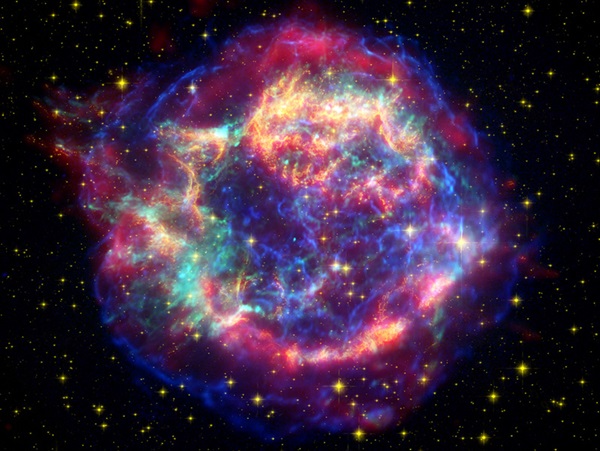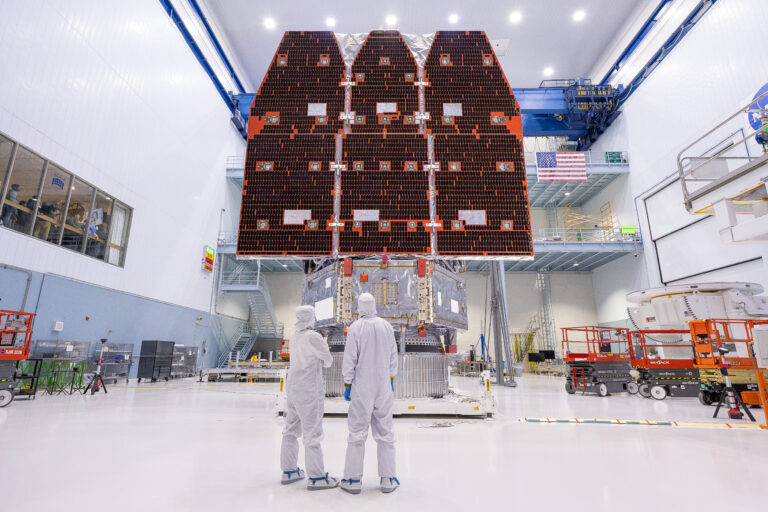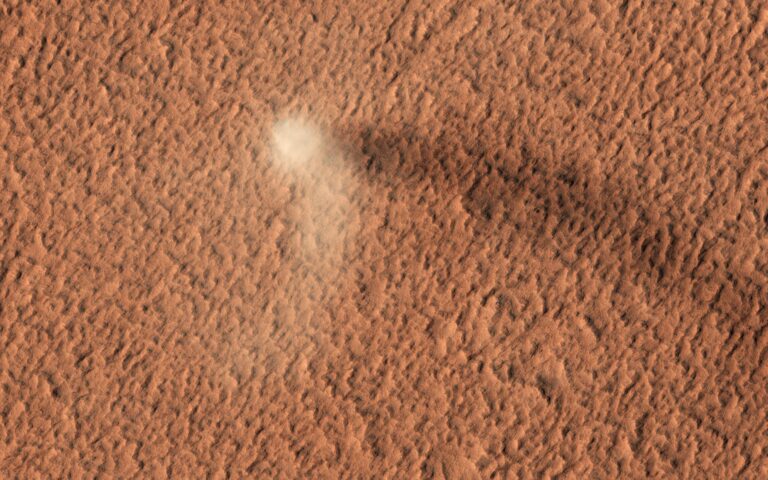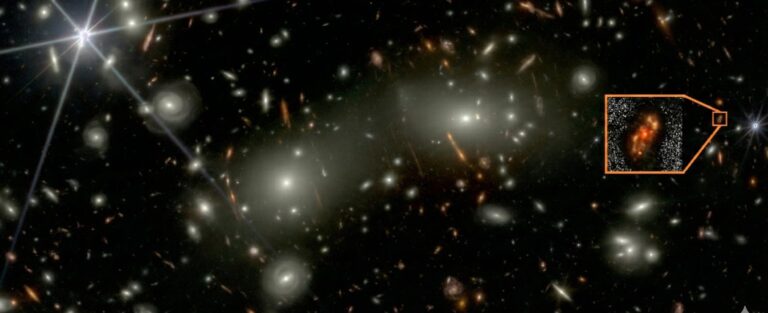Key Takeaways:
The heat-sensing Spitzer Space Telescope has detected the infrared echo of a star that exploded 325 years ago, say astronomers. What’s more, the object at the heart of the Cassiopeia A (Cas A) supernova remnant appears to have undergone a mysterious outburst just 50 years ago.
“We had thought the stellar remains inside Cassiopeia A were just fading away,” says Oliver Krause of the University of Arizona’s Steward Observatory, who led the study. “Spitzer came along and showed us this exploded star, one of the most intensively studied objects in the sky, is still undergoing death throes before heading to its final grave.” The team’s findings were published in this week’s issue of Science.
“We had no idea that Spitzer would ever see light echoes,” says George Rieke, also at the University of Arizona. Rieke led development of the telescope’s imaging photometer used in the study. “Sometimes you just trip over the biggest discoveries.”
Cas A, located 11,000 light-years away in Cassiopeia, is the site of our galaxy’s most recent supernova and is one of the sky’s most-studied objects.
In November 2003, while testing Spitzer on Cas A’s dusty environs, the scientists took note of specific features in the dust clouds. Follow-up observations made using the 6.5-meter Multiple Mirror Telescope Observatory at Mount Hopkins, Arizona, in May 2004 and the Calar Alto, Spain, 3.5-meter telescope in October 2004 and January 2005 showed some of the very brightest features are moving at close to the speed of light, revealing the light echo.
The team pointed Spitzer toward Cas A again in December 2004, and Krause analyzed how the features had moved in a year’s time. That’s when the researchers realized some of the infrared wisps and knots were in the wrong place to have been lit by the supernova’s original explosion.
“Further measurements will test this, but we think that the neutron star within Cas A had an outburst about 50 years ago,” Rieke says. “We see light that is just now encountering two interstellar clouds and heating them, so we see the outburst’s infrared echo.”
“The outward motions of the bipolar light echo … and the rather small distance — less than 50 light-years — can only be explained with recent outbursts of a source within Cas A,” Krause says.
Craig Wheeler, a supernova expert at the University of Texas, Austin, who was not involved in the research, tells Astronomy the finding “is really interesting and very strange.”
Cas A consists of an outer shell of expelled material and a central remnant of the destroyed star’s core, widely held to be a neutron star. For such a young object, Cas A’s neutron star is unusually faint — about 10,000 times dimmer in X rays than the central object of another famous supernova remnant, the Crab Nebula, Wheeler says.
The researchers suggest Cas A’s neutron star is active and may even be an exotic, highly magnetized neutron star, called a magnetar. “Magnetars are very rare and hard to study,” Rieke says. “If we have, indeed, uncovered one, then it will be just about the only one for which we know what kind of star it came from and when.”
However, a young magnetar should be bright in at least some wavelengths, which is not the case for Cas A’s central object. “This makes the simple identification of this event with a magnetar very much less than obvious in my mind,” explains Wheeler.
“Comparing magnetars with rotation-powered pulsars like the Crab might be problematic,” Krause tells Astronomy. For one thing, magnetar fields can be so strong quantum effects may suppress X-rays from all but a few locations on the surface. Given that, he says, “The X-ray luminosity of the Cas A point source is about what is expected for a quiescent magnetar.”
Both Wheeler and Krause agree that the presence of a black hole can’t be ruled out based on current X-ray data. But Krause says both the energy distribution and the absence of a mass-donating companion favor the central object being a neutron star.











